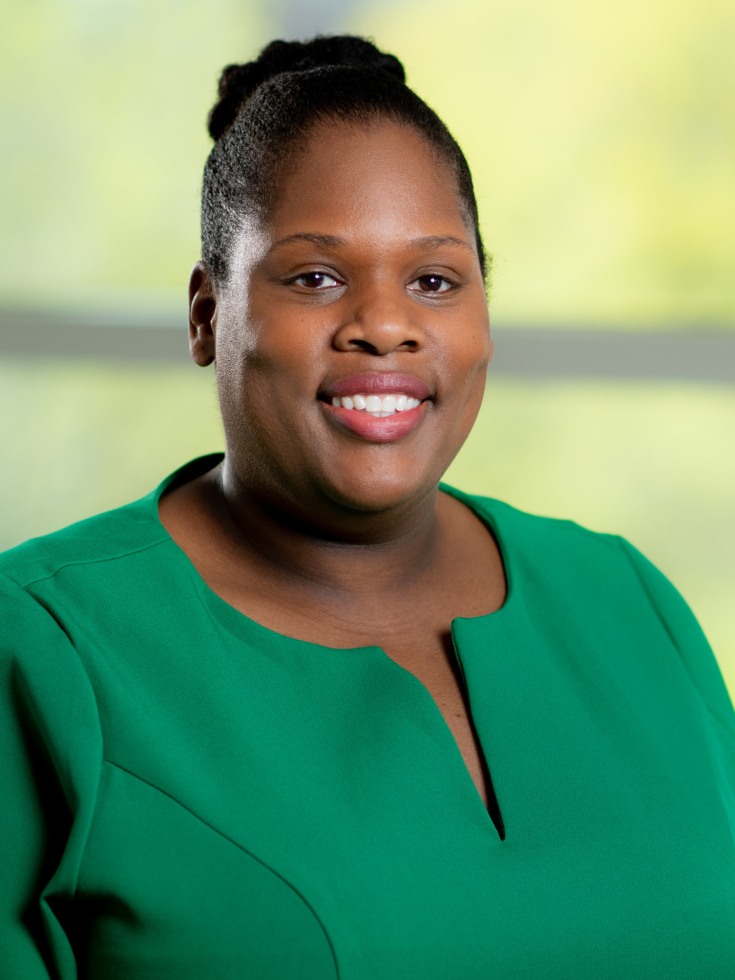An example of this recommendation already being put into action is the class Place Matters: Exploring Community- Level Contexts on Health Behaviors, Outcomes, and Disparities. Taught by Dr. Akilah Dulin Keita, Assistant Professor of Behavioral and Social Sciences, PHP2325 employs a participatory approach to exploring the ways in which environmental factors contribute to health disparities. Not only do students gain an academic understanding of these influences, but they actually get hands-on experience partnering with community organizations to analyze and address environmental barriers that might be impeding health in the community. “I think that it is important that students are provided with opportunities to become actively engaged in working in diverse community settings,” Keita said. “To that end, I wanted to develop my Place Matters course where students would get practical field experience in diverse economic settings, build their own self-efficacy for place-based work within the educational environment, and work with community partners to provide deliverables that will have real community and policy level impacts. I particularly like to encourage students to think about the diverse populations (e.g., racial/ethnic, age, ability, gender, etc.) who navigate built environments and how existing structures and policy changes will impact groups differently.”
Past class projects have included an analysis of the built environment surrounding schools and recreation centers, and how they might affect physical activity. For one such project, William Nardi and his teammates found that the neighborhood environment surrounding several schools made it hard for kids to be physically active outside. “Dr. Keita’s ‘Place Matters’ course embodies both the ‘learning by doing’ goal of the School of Public Health and the DIAP goal of promoting students experience in community engagement,” Nardi said. “Over the course of a semester we directly observed the built environment for our projects and came to understand how influential neighborhood-level variables can be to the health behaviors of residents.”
Another class, new this year, is Ethics of Global Public Health Engagement. Taught by Dr. Caroline Kuo, Assistant Professor of Behavioral and Social Sciences, PHP2025 explores the complex reality of conducting global health research and practice. Lessons are brought alive through global public health case studies; lively discussions with faculty, scholars, and scientists who work in global settings; experiential learning in the Providence community; and multimedia. “This course provides students with new frameworks for understanding and tackling health disparities in the global public health arena,” Kuo said. “We interrogate the dynamics of power and privilege that create ethical challenges in global public health work, and examine the historical, political, and economic structures that reproduce and reinforce these dynamics of power. Many of our discussions focus on issues of diversity and inclusion as they relate to the ethical complexities we experience in global public health. I want students to leave with new strategies that better prepare them to grapple with and resolve the ethical complexities and challenges that they inevitably will encounter.”
Learning public health by doing public health is a guiding principle of the School of Public Health, and there are many opportunities for students to get involved in the community outside of traditional coursework. Faculty across our four departments and 12 research centers conduct research in the community, and engage with diverse populations with unique health challenges. Food On the Move, sponsored by the Rhode Island Public Health Institute, provides access to fresh fruits and vegetables to those living in low-income, low-access neighborhoods. Students have had the opportunity to work on this project and observed first-hand the barriers faced by some Rhode Islanders. Karina Santamaria, doctoral student in Behavioral and Social Health Sciences said that “by visiting participants where they live and talking to them about how they obtain healthy foods, I realized that food deserts hide within food-rich areas, like Federal Hill. Many people who live up there cannot afford healthy foods, and when they can, they cannot connect culturally to the food around them. While there is diversity in its people, there just isn’t a food environment that caters to this diversity, and so people are excluded. This is the gap filled by programs like Food on the Move.”
More opportunities for students to understand health disparities and engage with diverse populations can only further enhance the inclusive culture here at the School of Public Health. Public Health is a unique field at Brown, with opportunities to explore and address disparities across groups related to health, while at the same time working to confront disparities within the School itself. We have, and will continue to work towards these objectives cooperatively, with knowledge and understanding produced by one informing our efforts on the other.
